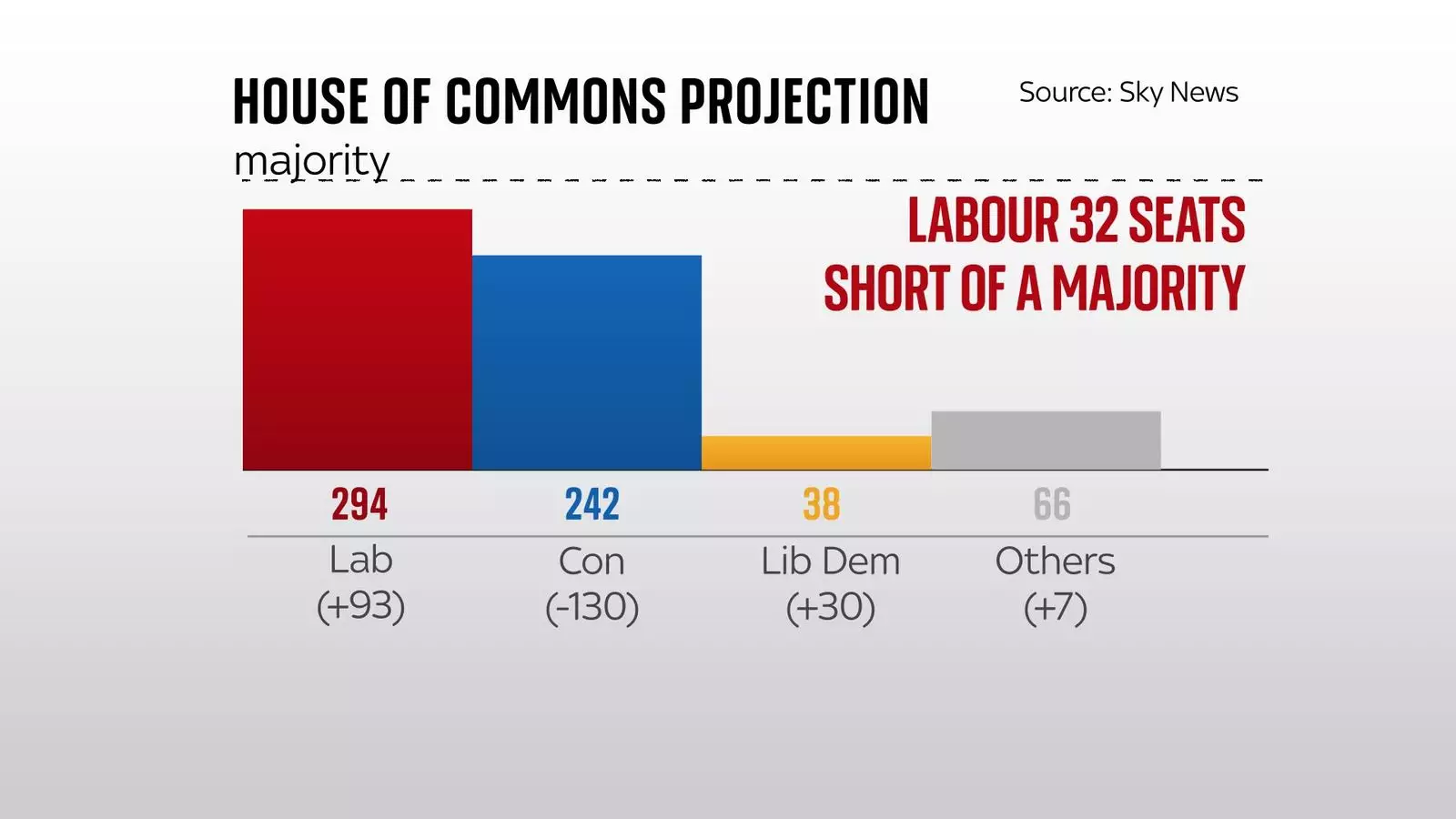Sky News recently released a projection based on two million council wards’ results, estimating the future of UK politics. According to their analysis, the Labour Party is expected to see an increase in their vote share from 33% in 2019 to 35% in the upcoming general election. This growth indicates a positive trend for Labour, positioning them to potentially become the largest party in the UK political landscape.
Liberal Democrats’ Progress
In addition to Labour’s projected success, the Liberal Democrats are also predicted to experience growth, with their vote share increasing by five percentage points to 16% compared to the 2019 election. Historically, the Liberal Democrats tend to perform better in council elections than in parliamentary elections, making this projection a significant development for the party.
On the other hand, the Conservative Party is facing challenges in the projected results. Sky News’ analysis suggests that the Conservatives could see a significant decrease in their seat count, dropping from 372 seats to just 242 seats on the new boundaries. This projected loss of 130 seats indicates a shift in voter sentiment that could impact the party’s position in the upcoming general election.
Apart from the major political parties, smaller parties such as the Greens, Reform, and independents are projected to collectively hold 22% of the vote share. This growing support for third parties highlights a trend in local elections where voters are increasingly turning towards alternative options. The projection also indicates a swing away from Labour towards independents in certain regions, showcasing the evolving political landscape in the UK.
Variances in Constituency Results
While the overall projection provides a broad picture of the potential outcomes of the next general election, there are discrepancies at the constituency level. For instance, in constituencies like Aldershot and Plymouth Moor View, local votes suggest a win for Labour contrary to the uniform swing analysis. Conversely, in constituencies like Blackburn and Oldham West, independents appear to have the upper hand in local votes despite Labour’s stronghold in uniform swing analysis. These variations underscore the complexity of predicting election outcomes accurately.
The projection based on local election results offers valuable insights into the future of UK politics. While Labour is poised to make gains and potentially become the largest party, the Conservative Party faces challenges in maintaining their current seat count. The rise of third-party support and discrepancies in constituency-level results further highlight the dynamic nature of UK politics leading up to the next general election.


Leave a Reply